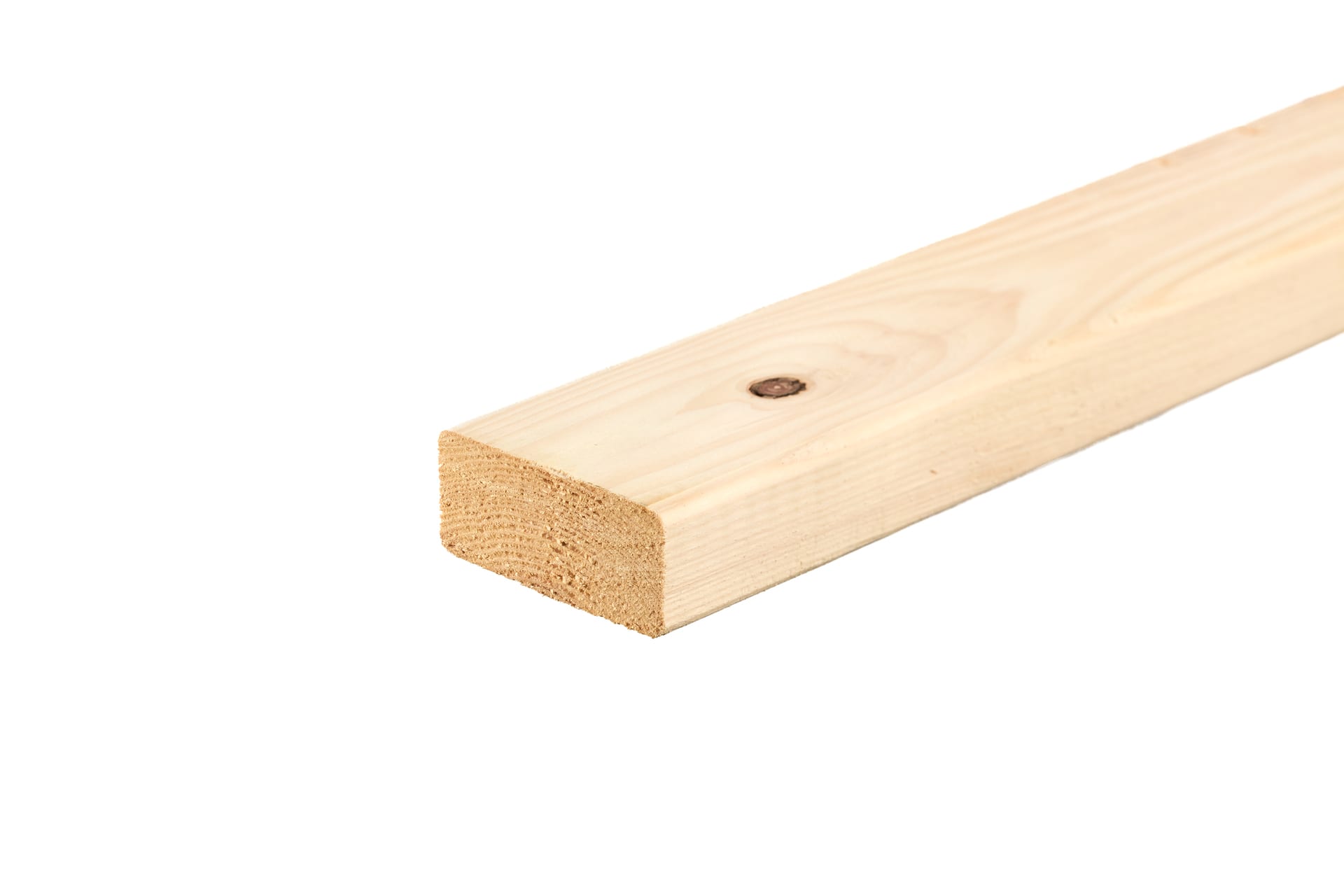CLS Timber
(12 Products)CLS timber, short for Canadian Lumber Standard, is a widely used softwood timber, particularly valued in woodworking and structural projects. It is sourced from coniferous species such as spruce, pine, or fir and undergoes kiln-drying to reduce moisture content, ensuring stability, durability, and resistance to warping or shrinkage over time. Its surfaces are planed smooth with rounded edges, enhancing its aesthetic quality and making it safer to handle.
What Is CLS Timber?
CLS timber refers to lengths of smooth-planed stamped softwood. These three letters stand for Canadian Lumber Standard - a grading system that guarantees consistent size and strength. In practice, the timber itself usually comes from spruce, pine or fir (collectively referred to as “SPF”).
The kiln drying process sees the boards baked down to a stable moisture level, while mills knock out most of the future twisting and shrinking that can plague cheaper, green timber. The result is a piece of wood that stays straight once it’s locked into a frame.
Its characteristic eased edges are easier on hands and plasterboard, and they give partition walls a tidier look if the studs end up exposed. You’ll usually find CLS in 38 by 63 or 38 by 89, cut in lengths from 2.4 up to 4.8 metres. These dimensions translate neatly into metric stud spacing.
C16 is the everyday spec, ideal for internal studs, noggins and roof carcassing; C24 is specified for greater span or point load.
Treatment options add another layer of protection against rot and insects, so the same board that frames a loft dormer can, with the right coating, serve in a sheltered exterior wall.
Applications
- Framing and roofing applications
- Carcassing
- Timber framework construction
- Wall construction, particularly partition walls
- Interior framing and finishing
- Skirting boards
- Architraves
- Decorative features
Benefits
- Pressure treated - resists insects, mould and rot
- Slow grown and kiln dried
- Sustainably sourced
- Strength class: graded to C16 or C24
- Exceptional strength and resilience
- Suitable for a wide range of applications
CLS Meaning
Canadian Lumber Standard (CLS) emerged in the mid-20th century as part of Canada’s national effort to unify timber grading and sizing.
Canadian sawmills needed a clear, export-friendly system that architects, engineers, and builders could trust. The CLS stamp quickly became shorthand for consistent dimensions, structural reliability, and a good surface finish.
British house-builders began importing CLS in the 1970s and 80s; its metric-friendly sizes and straightness suited the UK shift toward lightweight timber framing.
Today the term “CLS” is used in the UK and Ireland almost as often as in Canada, even when the boards are milled in Scandinavia or Eastern Europe.
Core Species
- SPF (spruce, pine, and fir) is the collective name for the softwoods most commonly sawn to CLS dimensions.
- These species share a favourable strength-to-weight ratio, machine well, and accept preservative treatments readily.
- Slow-grown northern stock (tight growth rings) gives higher density and better structural grades, which is why much CLS is sourced from Canada, Scandinavia, or the Baltics.
Frequently Asked CLS Timber Questions
What Is The Difference Between C16 And C24 CLS Wood?
The European Standard BS EN519 grading system divides CLS timber into two strength categories: C16 and C24. Although they are of a similar appearance, the latter is more robust in nature, an attribute which can be seen in its often higher price tag.
How Does CLS Timber Compare To Other Types Of Timber?
CLS timber is often preferred over other types of timber for load-bearing applications because of its strength and stability. On top of its many benefits, its consistent dimensions and smooth surface texture also make it easier to work with and provide a polished finish.
Can You Use CLS For Stud Wall Applications?
When it comes to interior stud walling, CLS is an obvious choice due to its structural integrity and stability.
Whether you need a partition or batten wall design, this type of timber will always ensure optimum precision for your project.
Can CLS Timber Be Used Outside?
To ensure the longevity of CLS timber, it is essential that it has been treated prior to outdoor usage. Otherwise, external conditions can cause rot and decay over time.
Before considering CLS timber for external use, it is critical to ensure that the wood has been adequately safeguarded against moisture and other environmental elements.
Although this type of timber is an excellent option for internal structures, its resilience outside depends on adequate protection and treatment.
How Does CLS Wood Contribute To The Circular Economy?
The circular economy is an economic model that seeks to minimise waste and promote the efficient use of resources by keeping them in use for as long as possible.
In the context of construction, the circular economy involves designing buildings and infrastructure to be durable, adaptable, and easy to disassemble and reuse. It also involves using materials that are renewable, recycled, or biodegradable to minimise the environmental impact of construction.
CLS wood contributes to the circular economy by being a renewable resource that can be recycled or reused at the end of its useful life. Additionally, the use of CLS timber in building construction can promote sustainable building practices and reduce waste.
















